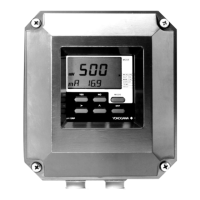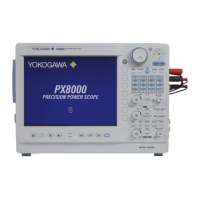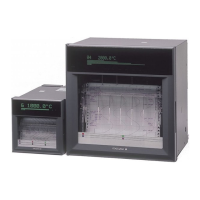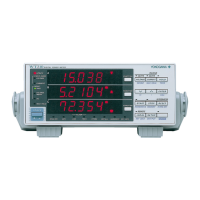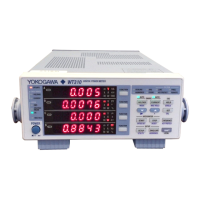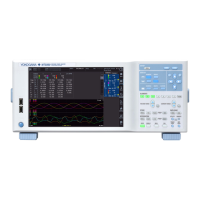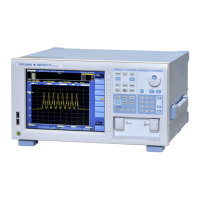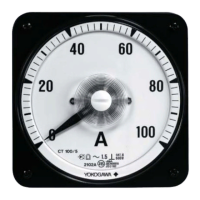<4. Operation>
4-5
IM 12B07W01-04EN 1st Edition : Nov. 11, 2016-00
l End of WASH sequence
When the WASH time elapses, the WASH contact signal stops. The air circuit for solenoid valve
SV2 switches to apply a pneumatic pressure to the port that lowers the cylinder. The sensor
holder goes down and the bottom plate of the cleaning chamber opens, causing the chemical
solution within the cleaning chamber to drain out. The pH/ORP Converter (or 2-Wire Analyzer)
then enters a relaxation interval after the WASH time has elapsed. The pH/ORP Converter
or 2-Wire ajayzer still holds the output signal during that period (if HOLD OUTPUT SIGNAL
is selected). The display indicates *WASH (blinking) meaning that the system is in the WASH
sequence.
The sensor holder is in the lowest position, allowing the electrodes of the pH sensor to be
submerged in the chemical solution and waiting for the relaxation interval to elapse so the system
enters the measurement mode.
4.3 Startup
The following procedures must be observed before the chemical cleaning pH measuring system
is put into regular operation.
4.3.1 Inspection of Piping and Wiring
Verify that all of the lines and cables are connected correctly (refer to Section 3, “Piping and
Wiring.” Also make sure that there is no slack in piping couplings and that terminal covers in the
control box are in place.
4.3.2 Supplying Chemical Solution to Holding Tank
The system uses a chemical solution, such as a 2 to 10 % solution of diluted hydrochloric acid or
diluted sulfuric acid, that can remove contaminants adhering to the pH sensor. The holding tank
for the solution has an effective capacity of approximately 17 litters. Fill the tank with this amount
of solution. When preparing a solution using concentrated hydrochloric acid (e.g., commercially
available hydrochloric acid with a concentration of 37 %) or concentrated sulfuric acid (e.g.,
commercially available sulfuric acid with a concentration of 96 %), prepare the solution in a
separate container and then transfer it to the tank.
WARNING
Hydrochloric and sulfuric acids are physically hazardous to the human body. In addition, these
acids can corrode metallic parts if the acids come into contact with equipment. When using either
of these acids in high concentrations to prepare a chemical solution, exercise the utmost care to
avoid possible hazards. Follow proper handling procedures when diluting these acids.
When lling the holding tank with the chemical solution remove the metering tank.
After lling the tank, replace the metering tank.
l How the metering tank works
A certain volume (100 ml) of a chemical solution is measured by using the difference in height
between two tubes: pressurized tube F and force-feeding tube G. A solution is introduced from
the holding tank (TK) to the metering tank through the check valve (seat) at the bottom of the
metering tank. The air in the tank is vented to the atmosphere through the air vent (bleed) on the
top of tube F until the solution level reaches the bottom of tube F. When the instrument enters
the WASH mode, force-feeding air pressure is added to tube F, the check valve closes, and the
volume for one wash is approximately 100 ml, which is metered based on the difference in height
between the two tubes’ bottoms in the metering tank.
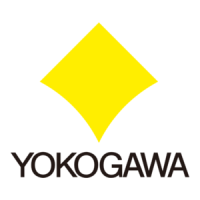
